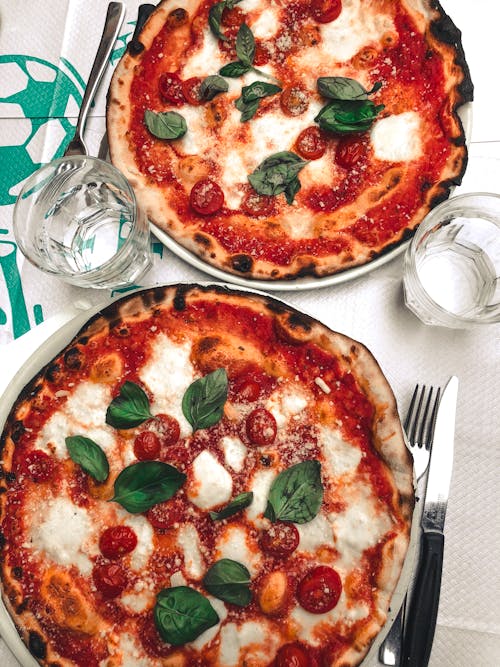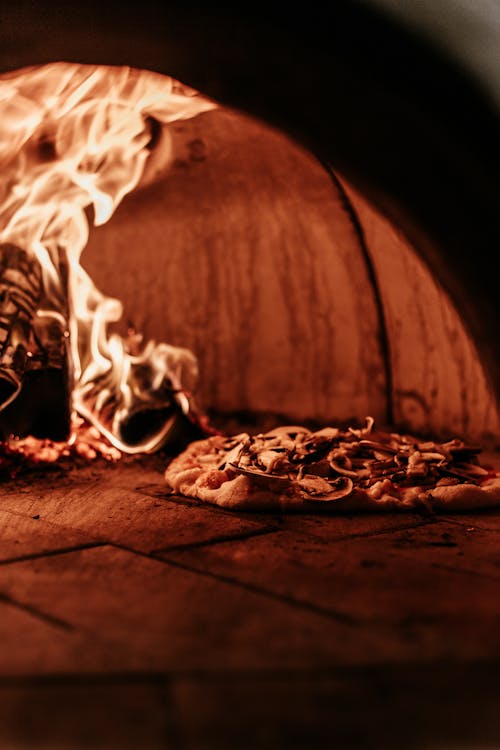
Pizza, one of the most beloved and versatile dishes in the world, has a storied history that spans continents and cultures. While many countries boast their own versions of this iconic food, Italy undeniably holds the crown as the queen of pizzas. In this extensive article, we’ll delve into the origins of pizza, its global popularity, and provide a detailed recipe to create an authentic Italian pizza at home.
The Origins of Pizza: A Historical Journey
Ancient Beginnings
The concept of combining bread with various toppings dates back to ancient civilizations. The Egyptians, Greeks, and Romans all had their versions of flatbreads with toppings. However, it wasn’t until the 18th century in Naples, Italy, that the pizza we know and love today began to take shape.
Birth of the Modern Pizza in Naples
Naples, a bustling port city, is widely recognized as the birthplace of modern pizza. In the late 18th century, the poor of Naples began adding tomatoes, which had been brought to Europe from the Americas, to their yeast-based flatbreads. This combination was both affordable and delicious, quickly gaining popularity.
The first true pizzeria, “Antica Pizzeria Port’Alba,” opened in Naples in 1830. These early pizzas were sold from street carts and were considered a meal for the working class. The Margherita pizza, with its simple yet flavorful combination of tomatoes, mozzarella cheese, and basil, was named after Queen Margherita of Savoy in 1889, symbolizing the colors of the Italian flag.
Italy: The Queen of Pizzas
Neapolitan Pizza: The Gold Standard
Neapolitan pizza, with its thin, soft crust and minimal toppings, is considered the gold standard of pizzas. Recognized by UNESCO as an intangible cultural heritage, the traditional Neapolitan pizza is made with specific ingredients and techniques, including San Marzano tomatoes, fresh mozzarella di bufala, and a wood-fired oven.
Regional Variations
While Naples is the epicenter of pizza culture, other regions in Italy have their own unique takes on this beloved dish. In Rome, you’ll find “pizza al taglio,” a rectangular pizza sold by weight, and “pizza bianca,” a white pizza without tomato sauce. In Sicily, “sfincione” is a thick, spongy pizza topped with onions, anchovies, and breadcrumbs.
Italy’s Global Influence
Italy’s influence on pizza is undeniable. Italian immigrants brought their pizza-making traditions to the United States in the late 19th and early 20th centuries, leading to the creation of distinct American styles like New York pizza and Chicago deep-dish pizza. Today, Italian pizza chefs continue to inspire and elevate the global pizza scene.
The Global Popularity of Pizza
Pizza in America
Pizza became a staple in American cuisine after World War II. Returning soldiers who had experienced pizza in Italy during the war created a demand for this delicious dish. The first pizzerias in the United States, such as Lombardi’s in New York City, opened in the early 1900s, but it wasn’t until the mid-20th century that pizza truly exploded in popularity.
American innovations like pepperoni pizza, Hawaiian pizza, and stuffed crust pizza have become iconic in their own right. Today, the United States boasts a diverse pizza landscape, with regional styles and creative toppings reflecting the country’s melting pot culture.
Pizza Around the World
Pizza’s appeal extends far beyond Italy and the United States. In Brazil, pizza is often topped with unique ingredients like green peas and quail eggs. In Japan, seafood and mayonnaise are popular toppings, while in India, paneer and tandoori chicken add a local twist. From the thin-crust pizzas of France to the hearty, deep-dish varieties in Canada, each country brings its own flavors and preferences to the pizza table.
Creating Authentic Italian Pizza at Home
Making an authentic Italian pizza at home is a rewarding culinary experience. With the right ingredients and techniques, you can bring a taste of Italy to your own kitchen. Here’s a detailed recipe to get you started.
Ingredients
For the Dough:
- 500g (4 cups) of Italian “00” flour (or all-purpose flour if unavailable)
- 325ml (1 1/3 cups) of warm water
- 10g (2 tsp) of sea salt
- 7g (1 packet) of active dry yeast
- 10g (2 tsp) of sugar
- 2 tbsp of extra-virgin olive oil
For the Sauce:
- 1 can (400g) of San Marzano tomatoes (or high-quality canned tomatoes)
- 2 cloves of garlic, minced
- 1 tbsp of extra-virgin olive oil
- Salt and pepper to taste
- Fresh basil leaves (optional)
For the Toppings:
- Fresh mozzarella cheese, sliced or torn into pieces
- Fresh basil leaves
- Extra-virgin olive oil
- Grated Parmesan cheese (optional)
Instructions
1. Preparing the Dough:
- In a small bowl, combine the warm water, sugar, and yeast. Stir gently and let sit for 5-10 minutes until frothy.
- In a large mixing bowl, combine the flour and salt. Make a well in the center and add the yeast mixture and olive oil.
- Mix the ingredients until a dough forms. Transfer the dough to a floured surface and knead for about 10 minutes until smooth and elastic.
- Place the dough in a lightly oiled bowl, cover with a damp cloth, and let rise in a warm place for about 1-2 hours, or until doubled in size.
2. Preparing the Sauce:
- In a medium saucepan, heat the olive oil over medium heat. Add the minced garlic and sauté until fragrant, about 1 minute.
- Add the canned tomatoes, breaking them up with a spoon. Season with salt and pepper.
- Let the sauce simmer for about 20 minutes, stirring occasionally. Add fresh basil leaves if desired. Remove from heat and let cool.
3. Assembling and Baking the Pizza:
- Preheat your oven to the highest temperature (usually around 250°C or 482°F) and place a pizza stone or an inverted baking sheet inside to heat.
- Divide the risen dough into two equal parts and shape each into a ball. Let them rest for 10 minutes.
- On a floured surface, stretch and shape one dough ball into a round pizza base, about 12 inches in diameter. Repeat with the second dough ball.
- Transfer the shaped dough onto a piece of parchment paper for easy handling.
- Spread a thin layer of tomato sauce over the dough, leaving a small border around the edges.
- Distribute the mozzarella cheese evenly over the sauce.
- Carefully slide the parchment paper with the pizza onto the preheated pizza stone or baking sheet.
- Bake for 8-10 minutes, or until the crust is golden and the cheese is bubbly and slightly browned.
- Remove the pizza from the oven and top with fresh basil leaves and a drizzle of extra-virgin olive oil. Sprinkle with grated Parmesan cheese if desired.
- Repeat with the second pizza dough.
4. Serving the Pizza:
- Slice the pizzas and serve hot. Enjoy your homemade Italian pizza with a side salad or a glass of wine for an authentic Italian experience.

Conclusion: Celebrating Pizza’s Universal Appeal
Pizza’s journey from humble beginnings in Naples to a global culinary phenomenon is a testament to its universal appeal and versatility. While Italy remains the queen of pizzas, each country has embraced and adapted this beloved dish, creating unique and delicious variations that reflect their cultural heritage.
Making authentic Italian pizza at home allows you to connect with this rich culinary tradition and enjoy the timeless flavors of a true Neapolitan pizza. Whether you prefer a classic Margherita or a creative combination of toppings, pizza’s enduring popularity continues to bring joy and satisfaction to people around the world.
So, gather your ingredients, fire up your oven, and embark on a delicious journey that pays homage to the queen of pizzas. Buon appetito!














